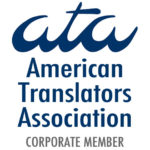Advances in technology, in particular mobile technology, combined with the constant growth in social media communication, are the two driving forces behind the expected demand for professional language and translation services in 2014.
 Image courtesy of FreeDigitalPhotos.net
Image courtesy of FreeDigitalPhotos.net
According to Renato Beninatto, the CMO of Moravia, we will see “major growth in the [language] industry this year.” Beninatto predicts that the expansion of mobile technology and social communications will generate a much higher “demand for localized language solutions.”
The National Council for Languages and International Studies has said that public and private-sector language-related initiatives are now a billion dollar enterprise in the US. In 2013, the industry generated $25 billion in the US alone.
The incredible growth recorded in the industry last year has been attributed to the large number of US companies working diligently to expand and strengthen their global presence. Mobile technology and social media communications have made international business opportunities so accessible that most companies worldwide, large and small, recognize the importance of investing in translation and other language services in order to open their doors to foreign markets.
Strangely enough, however, at the same time as investing $25 billion in language-related initiatives in 2013, the US continues to suffer from a lack of language-related subject interest in the classroom. The US Council on Foreign Relations believes that “foreign language education is on the decline,” and that it has been in serious decline for a number of years. This means that a lot of the language-related jobs needed for US brands to expand their businesses on a global level is outsourced to language experts in other countries.
In short, there are three main language-related trends that we should be ready for in 2014. 78% of CMOs believe that custom content is the future of marketing, reports Social Media Today. If companies want to continue globalizing their businesses throughout 2014, the most important tool that they will have at their disposal is that of content marketing programs. Companies which excel in 2014 will be those companies which invest both time and money in finding ways of connecting with different languages and cultures via mobile technology and social media communications.
Every day, more and more people are turning to mobile devices and smartphones as their primary source of information. Users access information from all over the world and they’re interested in what foreign companies have to offer/share. The demand for localized translations is likely to soar throughout 2014 and this will include translation services which dub multimedia content too.
On a final note, the impressive growth of cloud computing throughout 2013 improved the tracking precision of online user behavior. The detailed access to the demographics of a mass online audience that cloud computing has given us means that companies can now invest even more time and money in the generation of personalized online content for local communities and dialects. A surge in “local” translations is likely to further strengthen the economic position of the language industry as we progress throughout the next months.
The future seems to be very, very bright.











